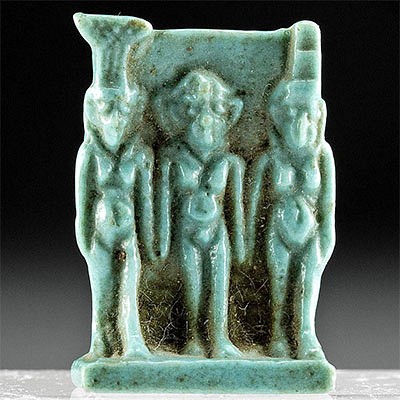16th / 18th C. European Maps of New Spain (2)
Lot 362
About Seller
Artemis Fine Arts
686 S Taylor Ave, Ste 106
Louisville, CO 80027
United States
Selling antiquities, ancient and ethnographic art online since 1993, Artemis Gallery specializes in Classical Antiquities (Egyptian, Greek, Roman, Near Eastern), Asian, Pre-Columbian, African / Tribal / Oceanographic art. Our extensive inventory includes pottery, stone, metal, wood, glass and textil...Read more
Categories
Estimate:
$600 - $900
Absentee vs Live bid
Two ways to bid:
- Leave a max absentee bid and the platform will bid on your behalf up to your maximum bid during the live auction.
- Bid live during the auction and your bids will be submitted real-time to the auctioneer.
Bid Increments
| Price | Bid Increment |
|---|---|
| $0 | $25 |
| $300 | $50 |
| $1,000 | $100 |
| $2,000 | $250 |
| $5,000 | $500 |
| $10,000 | $1,000 |
| $20,000 | $2,500 |
| $50,000 | $5,000 |
| $100,000 | $10,000 |
| $200,000 | $20,000 |
About Auction
By Artemis Fine Arts
Aug 5, 2021
Set Reminder
2021-08-05 10:00:00
2021-08-05 10:00:00
America/New_York
Bidsquare
Bidsquare : VARIETY SALE | Antiquities & Ethnographic Art
https://www.bidsquare.com/auctions/artemis-gallery/variety-sale-antiquities-ethnographic-art-7292
Featuring classical antiquities, ancient and ethnographic art from cultures encompassing the globe. Egyptian, Greek, Roman, Etruscan, Near Eastern, Asian, Pre-Columbian, Native American, African / Tribal, Oceanic, Spanish Colonial, Russian, Fossils, Fine Art, more! Artemis Fine Arts info@artemisgallery.com
Featuring classical antiquities, ancient and ethnographic art from cultures encompassing the globe. Egyptian, Greek, Roman, Etruscan, Near Eastern, Asian, Pre-Columbian, Native American, African / Tribal, Oceanic, Spanish Colonial, Russian, Fossils, Fine Art, more! Artemis Fine Arts info@artemisgallery.com
- Lot Description
Cartographer: Gerard Mercator. "Hispaniae Novae Nova Descriptio" Published by I.E. Cloppenburgh, Amsterdam, 1632. AND Stieler's "Mexico Und Centro-America …" Gotha, 1828. Two fascinating antique maps of New Spain. First, a copper engraved map entitled "Hispaniae Novae Nova Descriptio" (uncolored as published) that shows the southern and western parts of Mexico. This likely came from the Cloppenburgh competitive editions, and most of these maps were engraved by Pieter van den Keere. It is a fine, dark impression. Joining this is a hand-colored map of the Southwest entitled "Mexico Und Centro-America …" that was published soon after Mexico's independence from Spain. Size of "Hispaniae Novae Nova Descriptio": 8.5" L x 10.75" W (21.6 cm x 27.3 cm) Size of "Mexico Und Centro-America": 13.5" L x 17.25" W (34.3 cm x 43.8 cm)
Barry Ruderman eloquently explains the following about "Mexico und Centro-America" map: "The map is perhaps most noteworthy for its attempt to illustrate the early roads in the Southwest and Baja California, at a time when Mexico had only been independent for about 6 years and much of this region had been largely abandoned by the Spanish Missionaries during the prior decades. / Stieler bases his map on Alexander von Humboldt's map of Mexico, with additions. California is dominated by pre-Fremont Cartographic features, including a mythical river extending toward Salt Lake. Lake Teguayo is shown, along with an are marked Freye Indianer. Dozens of notes on Indians throughout California, Arizona, Utah, Nevada and Colorado. Excellent details in the Rocky Mountains, based upon Humboldt, Pike and Fremont. / In California, a "Fresch Water" Bay is noted, fed by a speculative river flowing to the northwest. Further east in the Utah area, Lake Teguayo is noted, the mythical lake south of Lake Timpanagos (Salt Lake), with a note that the western coastline of the map is not known. To the east of Lake Teguayo, the Colorado River drainage system is shown, with numerous roads and small Spanish settlements suggested, along with Indian Tribal names. / Texas is named, but the map shortly predates Austin's Colony. Remarkably, Wheat overlooks this map entirely, although he does note the 1834 United States map."
Provenance: private Glorieta, New Mexico, USA collection
All items legal to buy/sell under U.S. Statute covering cultural patrimony Code 2600, CHAPTER 14, and are guaranteed to be as described or your money back.
A Certificate of Authenticity will accompany all winning bids.
Replace: PLEASE NOTE: Due to recent increases of shipments being seized by Australian & German customs (even for items with pre-UNESCO provenance), we will no longer ship Replace: most antiquities and ancient Chinese art to Australia & Germany. For categories of items that are acceptable to ship to Australia or Germany, please contact us directly or work with your local customs brokerage Replace: firm.
Display stands not described as included/custom in the item description are for photography purposes only and will not be included with the item upon shipping.
#150687"Mexico Und Centro-America"map shows separation to centerfold, but is laid on thick antique paper with nice borders. Normal foxing and toning. Still very nice with beautiful hand coloring. "Hispaniae Novae Nova Descriptio" map has been laid on paper, but is separated from the backing in areas making it possible to see the atlas' text on the verso. "Circa 1600" is handwritten on the upper margin, and there is a handwritten inscription on the verso dating it ca. 1600. Tears, creases, and losses to the peripheries as shown. A nice, dark impression.Condition
- Shipping Info
-
All shipping is handled in-house for your convenience. Your invoice from Artemis Gallery will include shipping calculation instructions. If in doubt, please inquire BEFORE bidding for estimated shipping costs for individual items.
-
- Buyer's Premium



 EUR
EUR CAD
CAD AUD
AUD GBP
GBP MXN
MXN HKD
HKD CNY
CNY MYR
MYR SEK
SEK SGD
SGD CHF
CHF THB
THB














